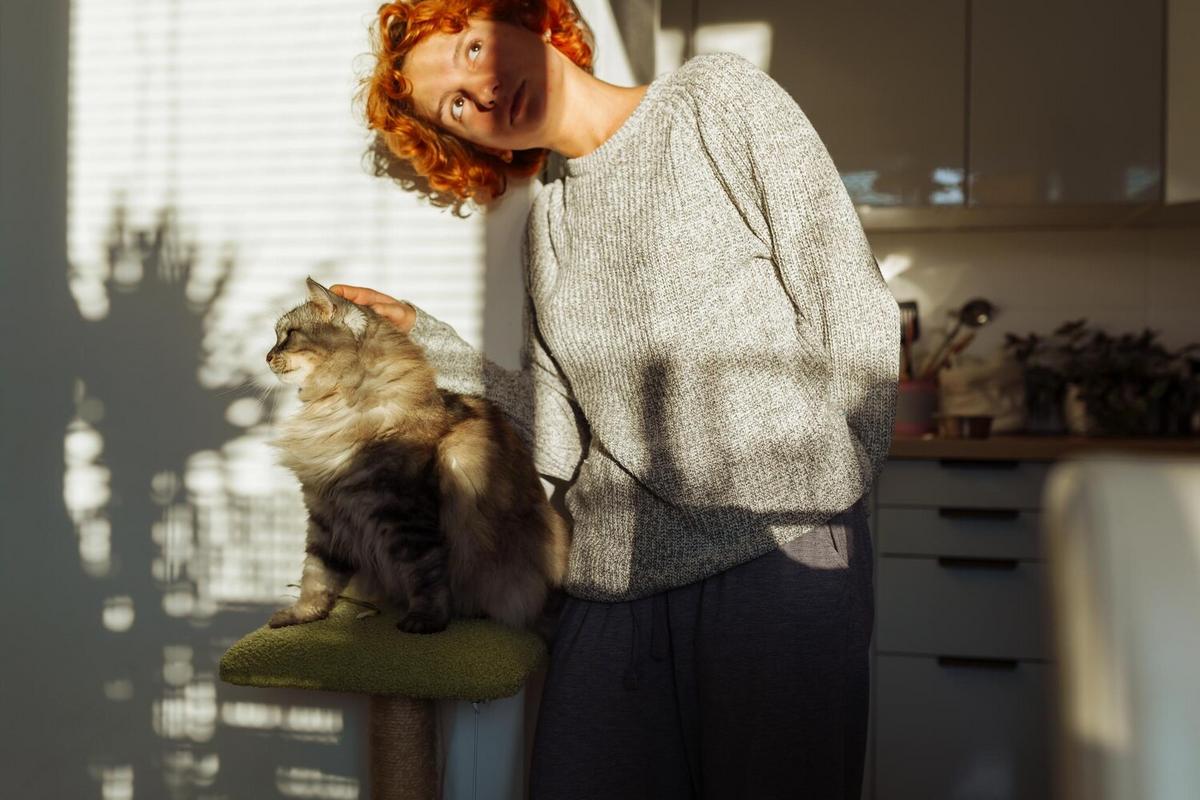Understanding and addressing cat anxiety is crucial for maintaining a harmonious home and ensuring your feline friend feels safe and content.
Identifying the Triggers of Cat Anxiety
Cats, much like humans, can experience anxiety due to various factors. Recognizing these triggers is the first step in helping your pet. Common causes include changes in the environment, unfamiliar people or animals, loud noises, and even a lack of mental stimulation. According to veterinarians, some cats are more predisposed to anxiety due to genetics or a lack of socialization during their early life stages.
Expert Insights on Cat Anxiety
Dr. Karen Becker, a well-known holistic veterinarian, emphasizes the importance of understanding each cat’s unique personality. She notes that while some cats may thrive in busy households, others prefer a quieter environment. In a study published by a renowned veterinary journal, it was found that 20% of cats show signs of anxiety in their lifetime, highlighting the importance of addressing this issue.
Personal Experiences and Anecdotes
One cat owner, Alex, shares the story of his cat, Whiskers, who developed anxiety after a move to a new house. By gradually introducing Whiskers to each room and providing plenty of hiding spots, Alex noticed a significant improvement in his cat’s behavior.
Effective Solutions for Managing Cat Anxiety
- Create a Safe Space: Ensure your cat has access to a quiet area where they can retreat when feeling stressed.
- Consistent Routine: Maintain a regular feeding and play schedule to provide a sense of security.
- Interactive Toys: Use toys that stimulate your cat’s mind and body, helping to alleviate anxiety.
- Pheromone Diffusers: Consider using diffusers to emit calming pheromones in your home.
A Comparison of Anxiety Solutions
| Solution | Benefits | Drawbacks |
|---|---|---|
| Safe Space | Provides a retreat | May isolate the cat |
| Consistent Routine | Reduces unpredictability | Less flexibility for owners |
| Interactive Toys | Encourages exercise | Requires supervision |
| Pheromone Diffusers | Creates a calming environment | Potential cost |
| Behavioral Training | Long-term benefits | Time-intensive |
| Dietary Supplements | Natural calming effects | Varied effectiveness |
| Professional Help | Expert advice | Financial cost |
| Regular Vet Visits | Catches health issues early | Stressful for some cats |
Frequently Asked Questions
What are common signs of cat anxiety?
Common signs include hiding, aggression, excessive grooming, and changes in eating or litter box habits.
Can anxiety in cats lead to health problems?
Yes, chronic anxiety can lead to stress-related illnesses such as urinary tract infections and digestive issues.
How can I help a newly adopted cat adjust?
Provide a quiet space, maintain a consistent routine, and introduce them gradually to the household.
Conclusion
Dealing with cat anxiety requires patience and understanding. By identifying triggers and implementing solutions, you can help your feline friend lead a happier, more relaxed life. For more in-depth advice on cat care, consider visiting reputable pet care websites or consulting with your veterinarian.




Leave a Reply